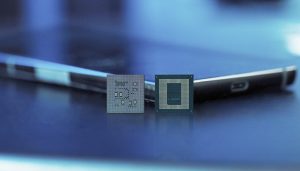How Intel Failed In The Smartphone Chip Business
What is a Smartphone Chip?
A smartphone chip is a microprocessor that powers a smartphone. Smartphone chips are essential to the overall function and performance of a smartphone. They help control basic operations, such as cell phone calls, internet browsing and messaging. Most modern smartphone chips are based on the ARM architecture.
Why Intel Failed in the Smartphone Chip Business
Intel’s smartphone chip business has been a disappointment for the chipmaker. In 2016, Intel announced that it was exiting the mobile processor business due to the competitive pressures of Qualcomm and Apple. This move left intel id atmswiggersventurebeat with only a small share of the global market for processors used in smartphones.
Intel’s problems can be traced back to 2007, when it attempted to enter the mobile phone chip market with its own product. The company’s efforts failed, and Intel returned to the processor market. In 2016, Qualcomm began producing processors using its own technology, which forced Apple to switch to using chips made by Intel.
The competitive pressures of the smartphone chip business have led to lower profits for Intel. For example, in 2017, profits from its core PC businesses were 7% higher than those from its mobile processor business. This difference is likely due to the fact that PC businesses are more profitable than mobile processor businesses.
Intel faces an uphill battle in the smartphone chip market because there is little room for growth. The market is dominated by two major players, Qualcomm and Apple, and neither company is likely to decrease its share of the market anytime soon. Additionally, Intel does not have any new technologies
Analytical Techniques for Optimizing Chips

Intel’s smart phone chip business is in serious trouble. Intel has been struggling to keep up with Qualcomm in the smartphone chip market, and their efforts have not paid off. In fact, Qualcomm has been raking in profits while Intel has been losing money.
One of the reasons for Intel’s failure is that they have not been able to optimize their chips for mobile devices. Qualcomm has been able to make their chips smaller and faster, which has helped them win over customers.
Although intel id atmswiggersventurebeat is still a major player in the semiconductor industry, their struggles in the smartphone chip business are a warning sign for other companies. If Intel cannot adapt to changing markets, they may face even greater challenges in the future.
Designing processors for power efficiency

Intel’s Atom processors have been used in smartphones for some time now, but they have not had the success that Intel hoped for. The company has recently announced a new line of Atom processors designed to be more power efficient, but they may not be able to compete against competitors such as ARM Holdings and Qualcomm.
Intel has been trying to compete in the smartphone chip business by releasing processors that are more power efficient. Their newest line of Atom processors is called “Cherry Trail” and is based on the 14nm process. This new design is supposed to improve performance while reducing energy consumption. However, this may not be enough to compete against companies like ARM Holdings and Qualcomm who have been focusing on energy efficiency for a while now.
Other chips in the market

Intel’s smartphone chip business has been a failure. The company was originally thought to be the chip supplier for Apple’s iPhone, but this didn’t pan out. Samsung instead became the iPhone supplier. Intel then turned its attention to Android devices, but this too was unsuccessful. The company pulled out of the market in January of 2019.
Conclusion
Intel has been the king of all things semiconductor for many years now, but that doesn’t mean they haven’t had their fair share of failures. In 2003, Intel announced plans to enter the smartphone chip market with a product called Clarksfield. The idea was to create a processor that could be used in both mobile phones and PDAs. Unfortunately, the project failed and Intel lost billions of dollars as a result. In 2010, they tried again with another phone chip project called Broxton, which also failed. What went wrong this time?
Intel’s biggest mistake was trying to compete against Apple and Samsung head-on. They couldn’t match their sheer volume or brand recognition and ultimately lost out on both sales and customer loyalty. Instead of developing unique products that appealed only to them, they decided it would be better to try to appeal to everyone instead by creating two versions of every product – one for premium brands like Apple intel id atmswiggersventurebeat and Samsung, and another for cheaper models from other companies like Motorola and Lenovo. This strategy backfired big time because it turned consumers off from using expensive Intel products in favor of alternatives that were much more affordable (and often less reliable).




